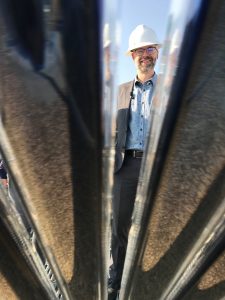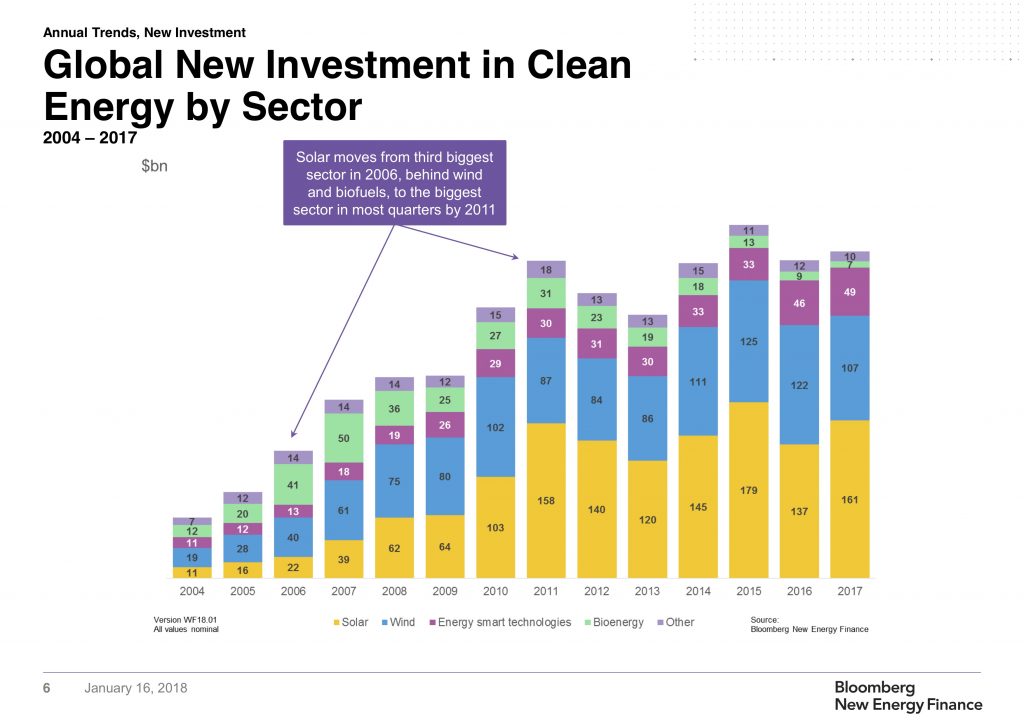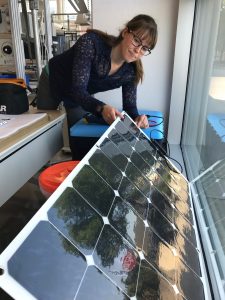By David Dodge and Scott Rollans
When NAIT started its Alternative Energy Program in 2011, it was it was ahead of its time.
NAIT past president Sam Shaw had noticed an increasing number of Albertans interested in purchasing renewable energy products. He helped raise $13.6 million to build a state-of-the-art facility, complete with working solar, geothermal, small wind and fuel cell technologies.
Program chair Dr. Jim Sandercock has been there since the beginning. “In 2009, we were talking about the hydrogen economy,” he recalls. “Things have really changed since then. Fuel cells are now almost completely irrelevant.”
Over the years, the program’s focus has shifted to include innovative ways to save energy, as well as alternative methods of producing it, says Sandercock. “There’s a whole energy efficiency piece as well. Building better buildings and heating those buildings using electrical systems like ground source heat pumps.”
Times are changing – the ascent of solar and wind power
Meanwhile solar has become much cheaper, reshaping the prospects and expectations of NAIT graduates.
“Since 2009…the cost of solar has dropped by about 80 percent,” Sandercock says. “So, that’s a really significant decline in cost. And we’re expecting it to continue declining into the future.”
Sandercock says solar is significant because it works well at small and large scale. “A very small module, put on somebody’s house with a small battery, could transform a household in Africa or South America from a home that has no access to electricity into a home that does have access—for only a couple hundred dollars. So, that flexibility of scale is really a critical component of why solar is doing so well.”
While the price of solar has declined significantly, wind power is already the cheapest new source of electricity money can buy. All this adds up to demand for grads with expertise.
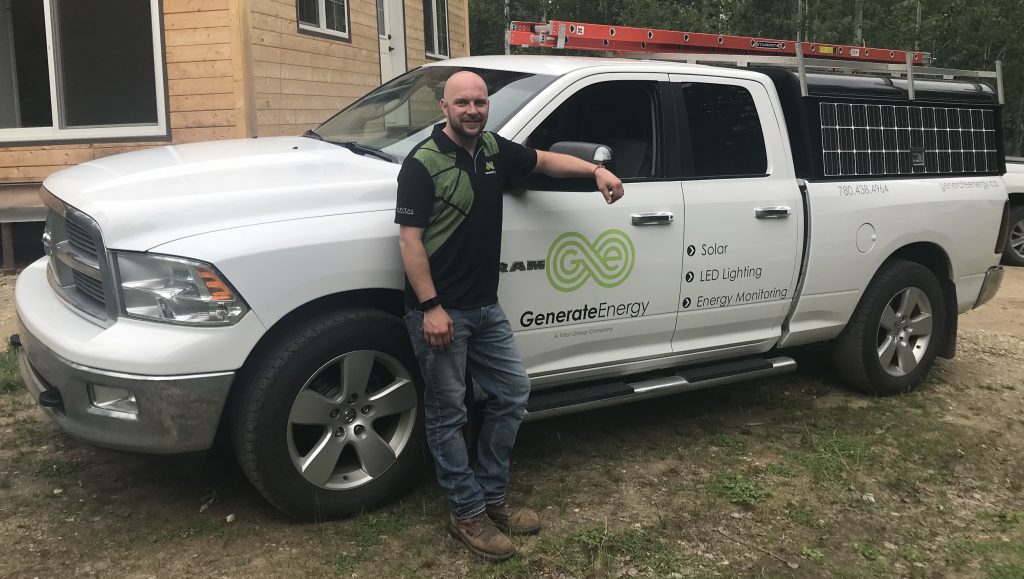
Brandon Sandmaier and fellow student Jeremy Frentz started a company (Generate Energy) before graduating from NAIT’s Alternative Energy Program.
Job prospects – 13% of students start businesses
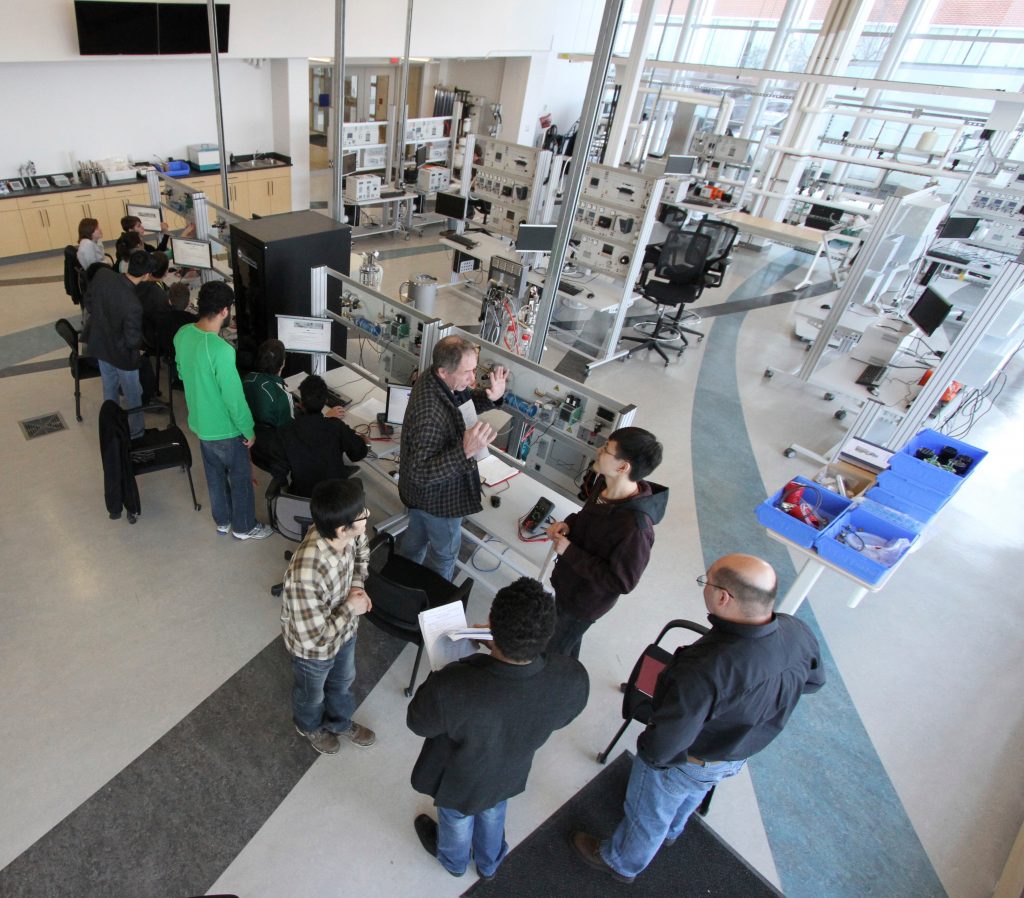
The first graduating class of NAIT’s Alternative Energy Program. Photo David Dodge, Green Energy Futures
The program was popular even in that first year. More students applied than the program could handle, but the renewable energy market was still small in Alberta. Even Sandercock worried about the students’ prospects for jobs.
In those early days of the program, employers didn’t know what to expect from Alternative Energy grads––jobs were not assured at all. But in just seven short years all that has changed.
“NAIT’s target is to have about 90, 95 percent of our students be able to get a job within six months of graduation and that’s a very high bar for a postsecondary,” says Sandercock.
This year, the Alternative Energy program more than doubled its intake of students—from 24 to 50—for the two-year program.
The program attracts a diversity of students, some fresh out of high school and many more that already have diplomas or university degrees looking to get into the clean energy business. “Our average age for a student is actually 26 to 28. [We have] as young as 17, and as old as 56,” says Sandercock.
In the best year fully 13 per cent of NAIT Alternative Energy grads started their own businesses—students like Brandon Sandmaier. Sandmaier met his business partner Jeremy Frentz at NAIT. Before they even graduated, the two had started Generate Energy, a solar and energy auditing business that is now part of the Vital Group of Companies.
Being part of the next industrial revolution for energy
The program tends to attract highly motivated students: “I think that really makes a difference, when people understand this isn’t just a job,” says Sandercock. “This isn’t just a career––this is an actual opportunity to get on board on the next industrial revolution for energy.”

This year the NAIT Alternative Energy program doubled the number of students that will be accepted into the program. Photo NAIT
As renewable energy becomes more and more attractive, so too do NAIT grads. In the NAIT program’s early days, many employers didn’t really know what to do with alternative energy grads. Now, they’re actually recruiting directly from NAIT.
“With our program, companies know exactly what skills our alumni come with. They can get a really short list, and interview off that—and save themselves a lot of HR expense as a consequence,” says Sandercock.
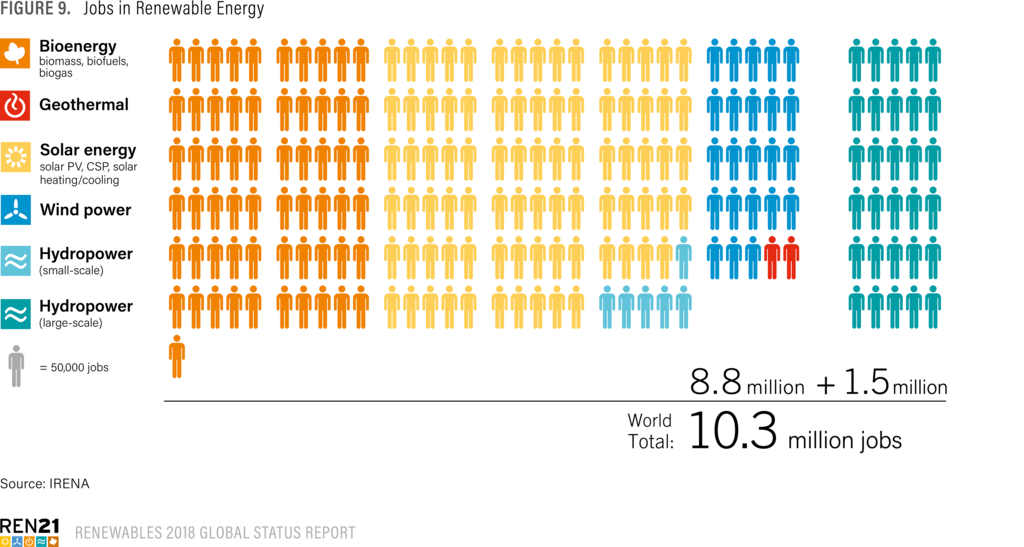
In 2017 there were 10.3 million jobs in renewable energy world-wide – Renewables 2018 Global Status Report.
Recently, we profiled NAIT alumni like Rae Anne Wadey from the first graduating class, and Brandon Sandmaier, who graduated two years ago. Both emerged from the program to become active players in Alberta’s emerging renewable energy industry.
According to Sandercock, that momentum will only continue to build. Because the NAIT program has kept up with new trends and developments in alternative energy, its grads will be well equipped to cope with a changing landscape.
“We’re talking about a wholesale change of how we generate energy,” Sandercock says. “So, the opportunities for companies and the opportunities for the alumni are huge.”
This Faces of the New Economy story is a joint project with the David Suzuki Foundation and part of the Charged Up Series. Learn more about The New Energy Economy on an interactive map produced by the Pembina Institute.

